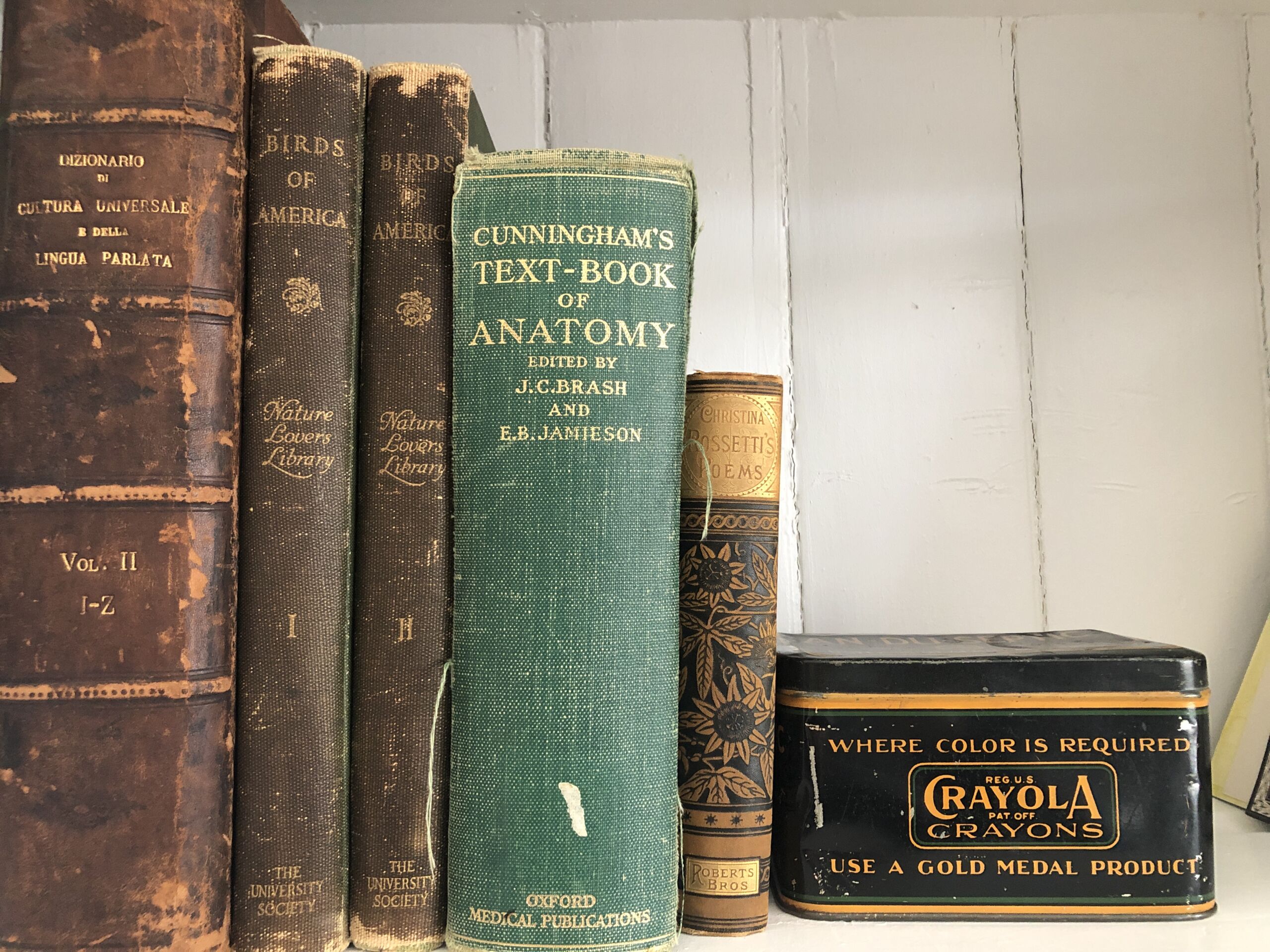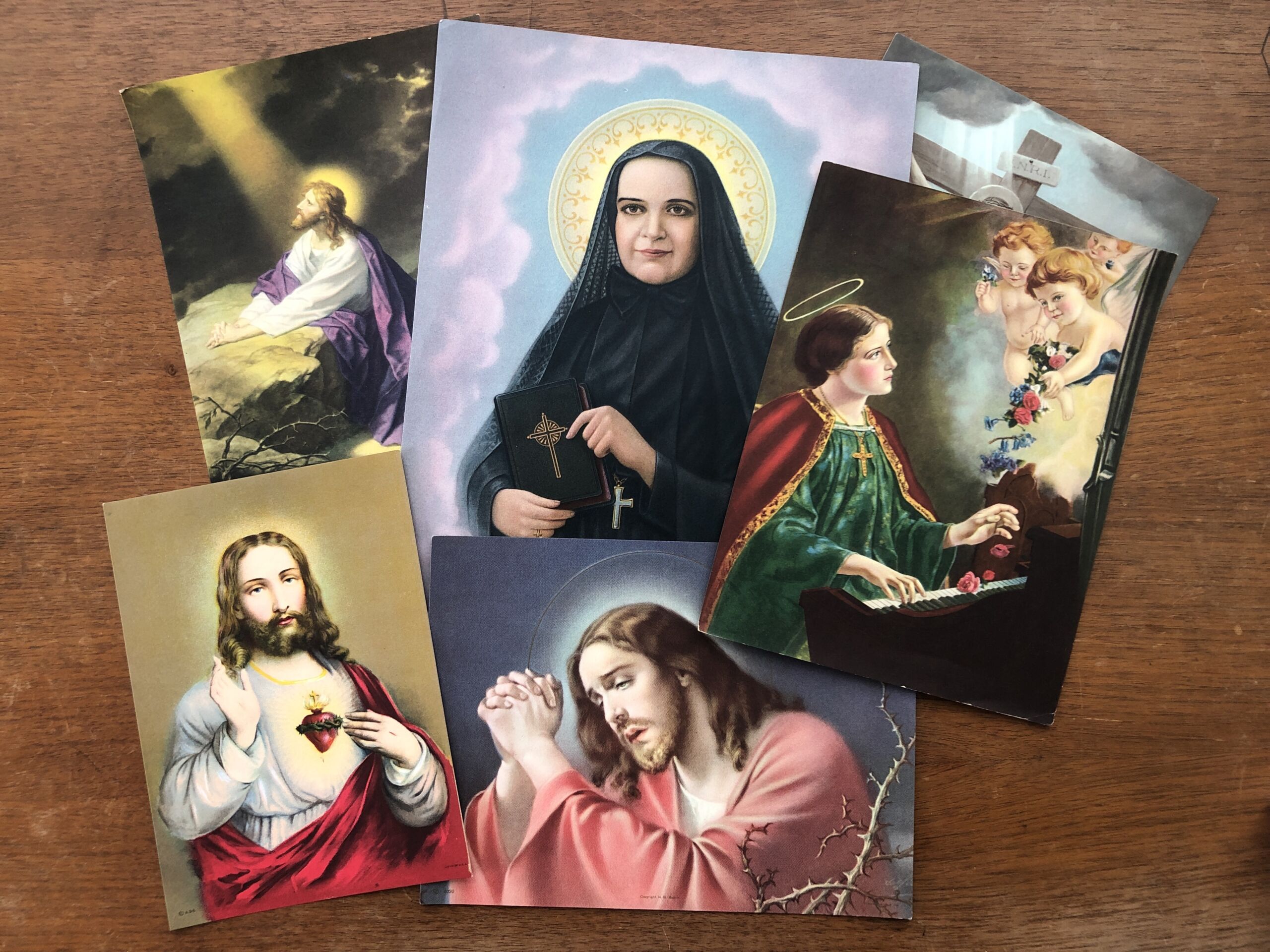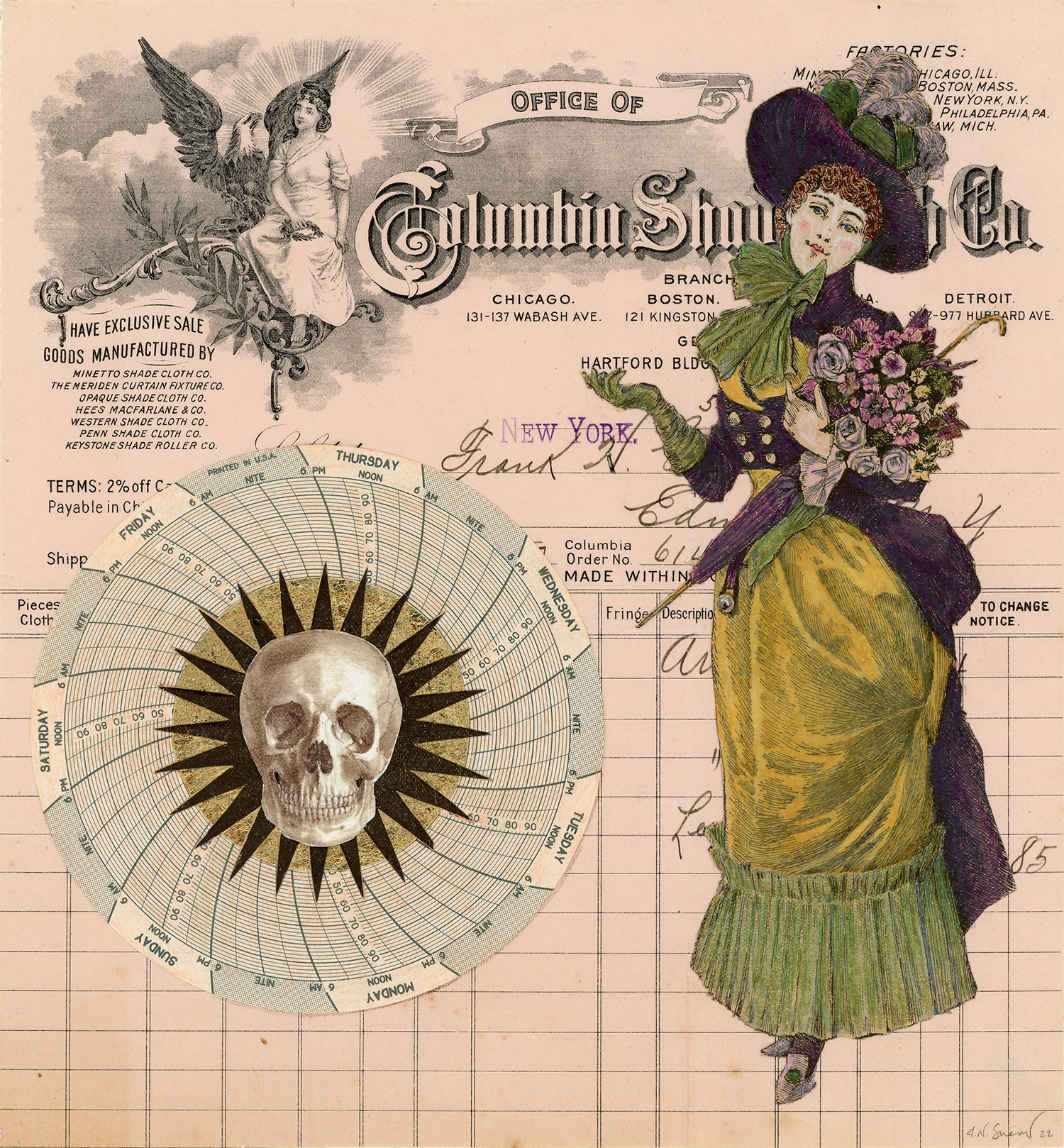
A few of the antique books I can’t bring myself to cut up.
As the daughter of antique dealers, I grew up surrounded by beautifully aged objects and learned how to love, preserve, and care for them. As an artist who works with antique and vintage materials in my collages, I often find myself in a quandary. Creating art with ephemera brings new meaning and purpose to an object, yet the very act of cutting up antique paper is the antithesis of preservation.
You might ask, why not simply scan and print the images from antique sources thereby preserving them? I love working with the different weights of paper I find, as each requires a different touch, and I like the patina of age. My professional quality ink-jet printer simply cannot hold a candle to a chromolithograph, nor can it mimic a letterpress document.
When I encounter an illustration that really speaks to me, it is as if something within me clicks. My eyes drink in the illustration, my fingers ache with the desire to pick up my knife and trace the lines with my blade. I NEED to feel the weight of the paper and the drag of my knife through it. Suddenly, the spell is broken by a question rising to the surface that I feel compelled to ask myself over and over again: “Is it okay to cut this up?”

A small collection of the chromolithograph vintage prayer cards I used to create “The Mysteries”.
I have worked with many antique and vintage papers that have caused me to have long and tedious negotiations with myself about whether I can alter or harvest the images from a source. I remember having to work up the courage to cut into my first book, books being counted among my most prized possessions. I had a similar experience when I started working with vintage prayer cards because I worried some might consider cutting them up to be an act of sacrilege. To begin with, we are all taught that we must not damage books, out of respect for the hard-won knowledge contained within them. I navigate the dilemma of cutting things up by evaluating each one individually. I have arrived at a list of questions that help me determine if an item should be preserved.
What is the condition of the item? Is it salvageable? If it is, what would it take to restore it? Would anyone go to such lengths for said item? What purpose did it serve originally and what does it serve now? Would collaging it bring new meaning and life, give it more purpose than it currently has? Does anyone value this piece of ephemera? Why? Is it an important example of an illustration or in the case of a book is the whole greater than the sum of its parts?
I start by conducting an internet search for the item to determine how rare it might be. This acts as insurance that I am not “destroying” something of great cultural significance or monetary value. In my searches, I often discover a history of an item and I then weigh the information to see if it changes my categorization. I frequently encounter duplicates, which provides more information about an item’s rarity, and opens the possibility of acquiring more to use in duplicate.
I am careful to evaluate the cultural value, even if an item is relatively inexpensive and readily available, because the monetary “value” doesn’t always provide a clear answer. I came across a pair of early 20th century books on birds with stunning illustrations. The value of each book was under $20, meaning I would have quite a lot of material for my investment. The covers were quite distressed and there was some foxing on the pages. Many books such as these have been destroyed over the centuries. They are taken apart and the illustrations sold as prints for people’s homes. I have some 19th century examples gracing the walls of my dinning room! Ultimately, I could not bring myself to violate the integrity of the books as a whole and a separate a two-volume set.
As a result, I have found that I have inadvertently started a small collection of antique books and paper ephemera – of things I cannot bring myself to cut up. I also retain examples of duplicates, essentially keeping one for posterity. Preserving duplicates also allows me to feel that I am being selective and responsible about what I use. What makes this quandary so difficult is that there aren’t any clear-cut answers. Research can help us arrive at a decision about the fate of a piece of antique paper, but I find my emotions often play a large role in the process.

The Delineator – the antique fashion magazine gifted to me that I had so much trouble cutting up.
Recently a client gifted me some fabulous late 19th century women’s fashion magazines. I was immediately smitten with the dresses, which danced in my mind’s eye in a collage yet to be. I began researching what I had. The condition of the magazines is “fair” and they are not of any significant monetary value. Their covers are tattered and stained, the paper has been bent and has curled in multiple places, there are small tears and a few pages are coming loose from the binding. Someone at some point, in this item’s 128-year-old history, had applied scotch tape, long since desiccated, in an effort at repair. Despite these flaws, all three of the magazines are complete and intact copies. I marveled at the window in time into the aesthetics and thinking that these periodicals provided. It was then that the dreaded question struck. Is it okay to cut these up?
It feels as if I would be committing a transgressive act to cut up a 128-year-old magazine that is still intact, despite the fact that this periodical was never intended to be preserved. I struck upon the idea of looking up the circulation and found that there were 500,000 magazines printed every month! I surmise that there are still a great many copies out there, and therefore it is okay for me to give it new life in one of my works of art. Yet I am still struggling with the idea of cutting it up and I can’t quite put my finger on the reason why. Perhaps, in this case it is once again a matter of courage to take up my knife to create something new from the old.


Clearly I got over my qualms..."Grin and Bear it" and "One Minute You're in the Pink the Next..." Death Becomes Her series resulting from cutting up the 1894 The Delineator fashion magazine. Check out more works from my Death Becomes Her series https://ansherman.com/collage-by-alexandra-n-sherman/death-becomes-her/